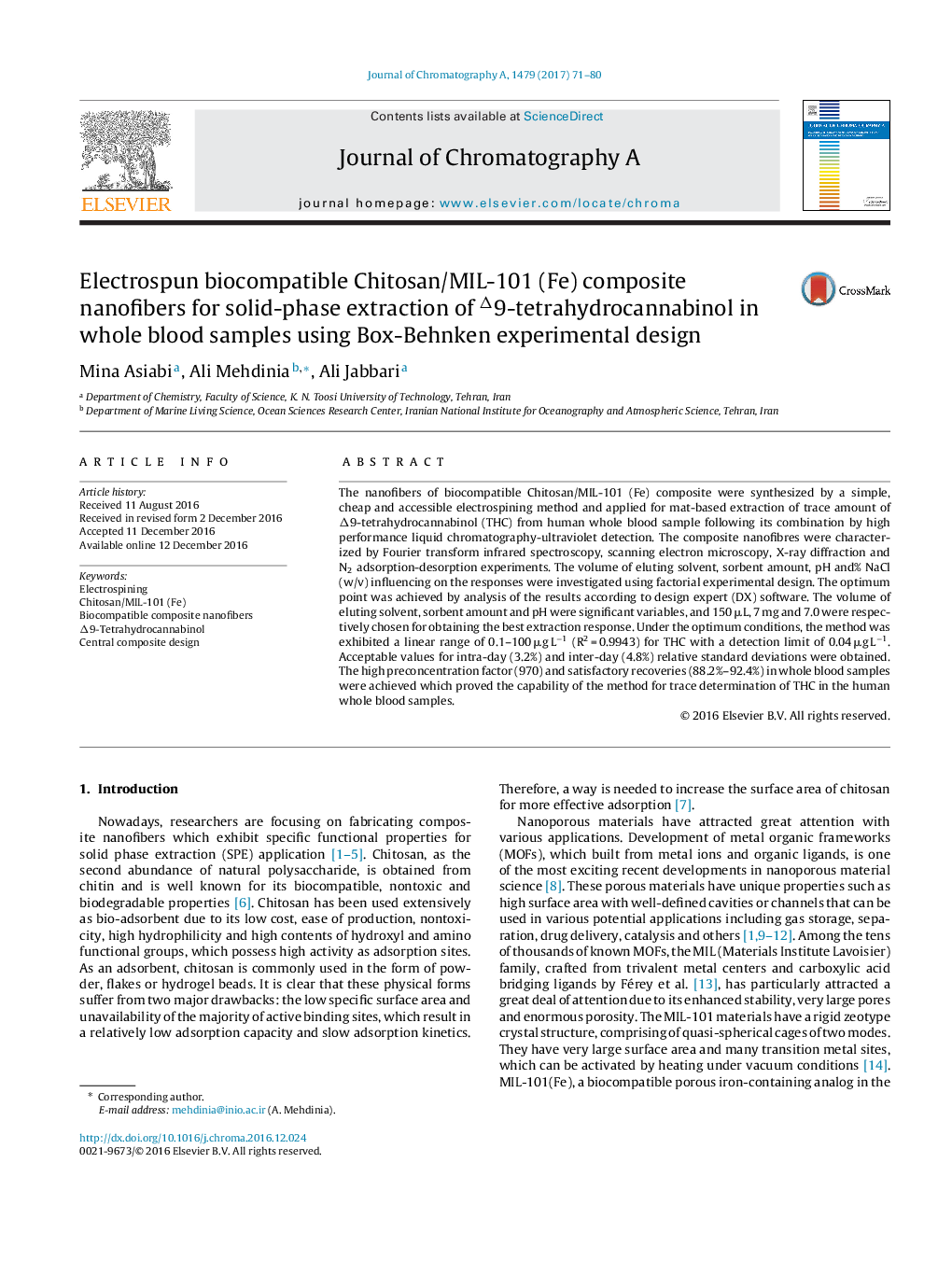| Article ID | Journal | Published Year | Pages | File Type |
|---|---|---|---|---|
| 5135567 | Journal of Chromatography A | 2017 | 10 Pages |
•Novel Electrospun Biocompatible Chitosan/MIL-101 (Fe) Composite was synthesized.•The composite Nanofibrous mat was used as adsorbent for solid-phase extraction.•A Box-Behnken design was used for optimization of the experiment parameters.•The method was successfully applied in determination of THC in Whole blood samples.•The method features low LOD, wide dynamic range, and good accuracy and precision.
The nanofibers of biocompatible Chitosan/MIL-101 (Fe) composite were synthesized by a simple, cheap and accessible electrospining method and applied for mat-based extraction of trace amount of Δ9-tetrahydrocannabinol (THC) from human whole blood sample following its combination by high performance liquid chromatography-ultraviolet detection. The composite nanofibres were characterized by Fourier transform infrared spectroscopy, scanning electron microscopy, X-ray diffraction and N2 adsorption-desorption experiments. The volume of eluting solvent, sorbent amount, pH and% NaCl (w/v) influencing on the responses were investigated using factorial experimental design. The optimum point was achieved by analysis of the results according to design expert (DX) software. The volume of eluting solvent, sorbent amount and pH were significant variables, and 150 μL, 7 mg and 7.0 were respectively chosen for obtaining the best extraction response. Under the optimum conditions, the method was exhibited a linear range of 0.1–100 μg L−1 (R2 = 0.9943) for THC with a detection limit of 0.04 μg L−1. Acceptable values for intra-day (3.2%) and inter-day (4.8%) relative standard deviations were obtained. The high preconcentration factor (970) and satisfactory recoveries (88.2%–92.4%) in whole blood samples were achieved which proved the capability of the method for trace determination of THC in the human whole blood samples.
